Cooking salmon offers a choice between mediocre outcomes.
You can steam it and get tender, perfectly cooked flesh but no browning. Or you can sear it for better color, flavor and texture, but you’ll probably dry it out.
Convinced we somehow could have it both ways, we experimented with cooking en papillote, the classic French method of cooking in a sealed parchment paper packet. The packet traps the natural moisture of the food, puffing impressively and steaming the dish in its own juices.
Cooking en papillote is particularly effective for delicate foods, which emerge moist and tender. Though the technique is decidedly French, variations of it—such as cooking food wrapped in leaves, husks or even paper bags—can be found around the world.
Trouble is, the results often are bland. That’s because browning enhances both the flavor and texture of foods, particularly proteins. But browning—called the Maillard reaction—only occurs above 300°F. Except for inside a pressure cooker, steaming never gets above 212°F, the boiling point of water.
As we tinkered with the packet technique, we borrowed a variation we’d seen French chef and restaurateur Jean-Georges Vongerichten use. He finds parchment too fussy. The paper can get soggy and it’s clumsy to fold tightly enough to form an airtight packet. He favors aluminum foil.
We tried it and were instantly won over by the ease. A 12-by-24-inch sheet of foil (folded in half to form a 12-by-12 packet) was just right for the four fillets we wanted to cook. And it sealed up tight with no trouble.
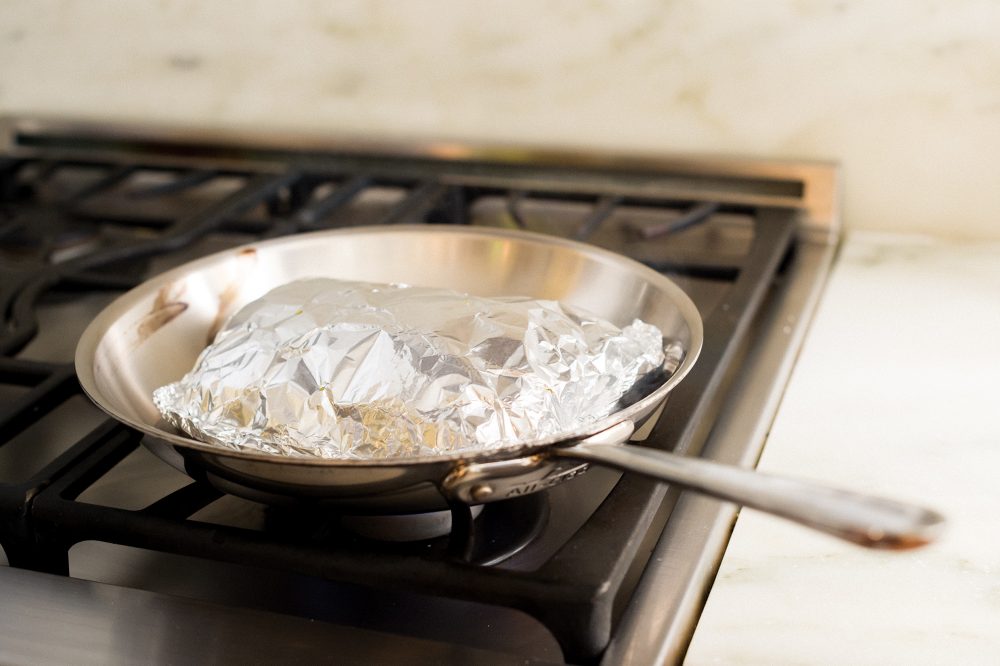
Kitchen parchment is too delicate for stovetop cooking.
But aluminum foil held up to our skillet treatment, allowing the salmon to both steam and sear simultaneously.
But while the foil certainly was easier to use, our oven-baked salmon (the classic approach for en papillote) still wasn’t browning. That’s when we realized the foil had more going for it than just ease. Parchment packets don’t work well over direct heat, but foil opened up new opportunities to experiment with cooking methods.
We decided to heat a dry skillet on the stovetop until very hot, then set our foil packet directly into it. We immediately heard a satisfying sizzle, a hopeful sign for browning. Within a few minutes the packet puffed from the steam inside, as you would expect with en papillote cooking. When we opened our packet after just 6 minutes? Success! The flesh was perfectly steamed and tender, while the bottoms of the fillets were a satisfying golden brown. The aluminum foil—the second best conductor of heat after copper—had quickly drawn the intense heat of the skillet up to the fillets, shooting past the 300°F needed to dry and sear the bottoms. As a perk, cleanup time was even faster than the cooking time because the skillet never got dirty.
The only tricky part is fitting four 6-ounce fillets into a foil packet that fits inside the skillet. You really have to watch the size and weight of the fillets and possibly do a bit of trimming. We like to remove the belly ends of the fillets anyway since they taper off so thinly. In fact, consider cutting your own fillets; grocery store fishmongers don’t always get it right. And try to avoid previously frozen salmon; it turned out a bit dry in our tests.
Creating an aluminum foil packet for salmon
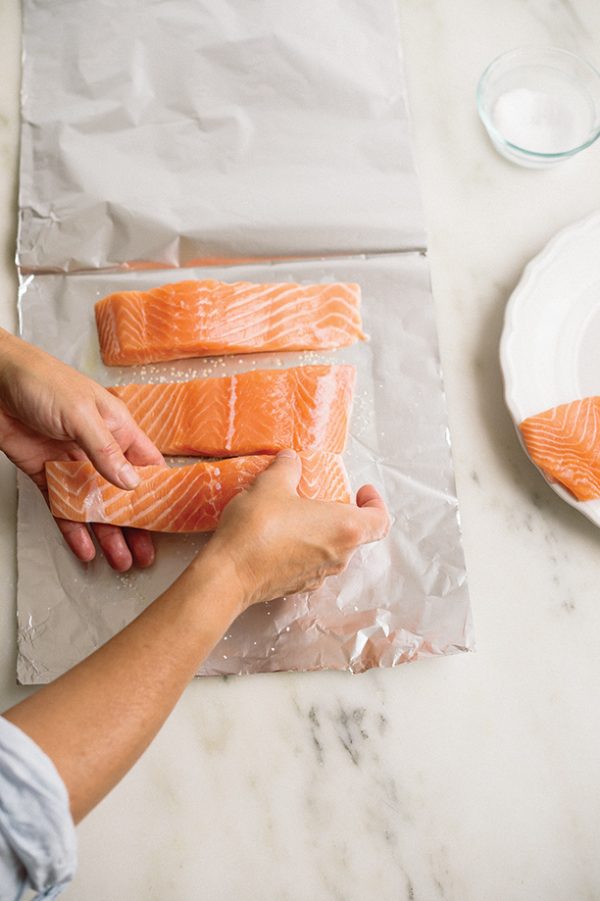
Drizzle olive oil on one half of a 12-by-24-inch sheet of foil, shiny side facing down. Arrange 4 salmon fillets over the oil.
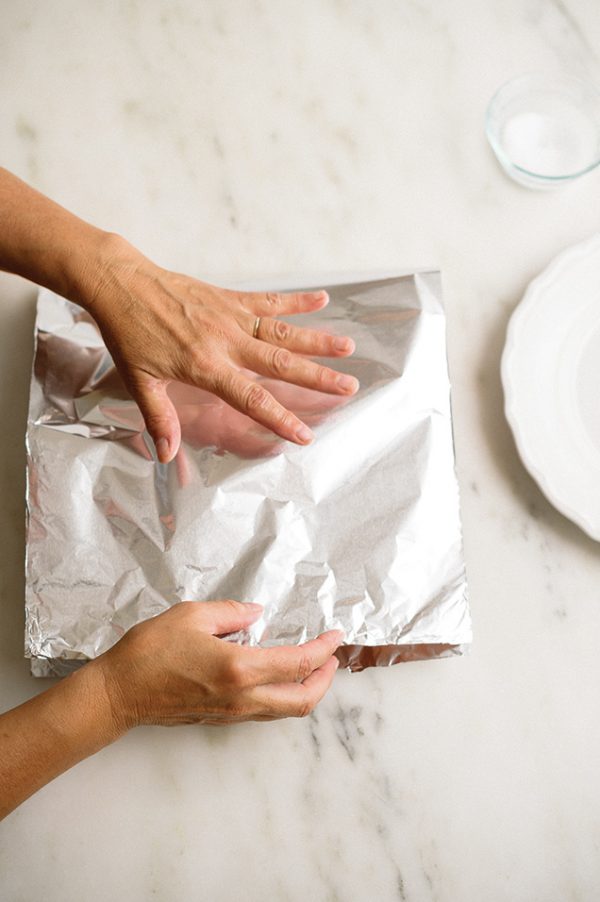
Fold the other half of the foil over the salmon to form a 12-inch square. Fold the open sides together to close.
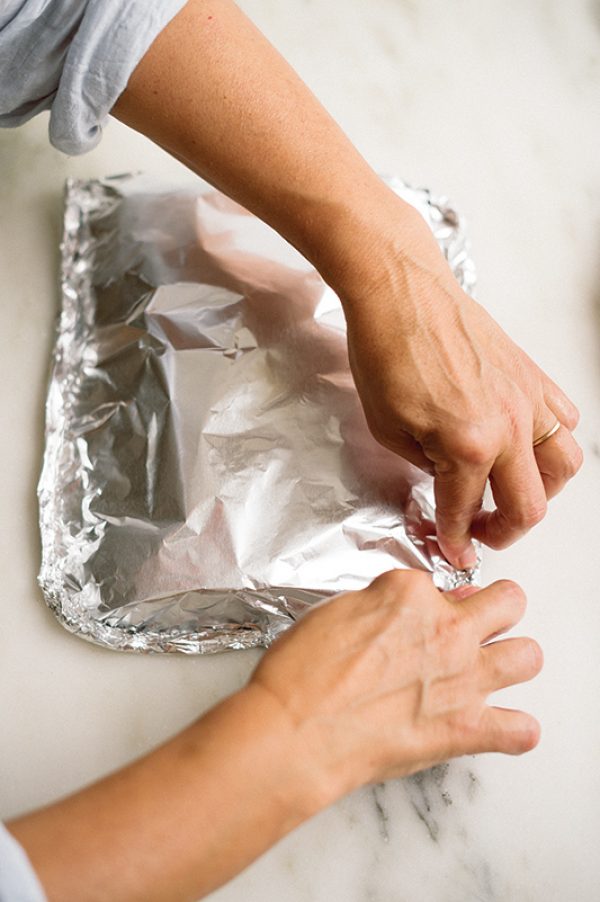
Tightly crimp the folded sides to form a loose packet around the salmon. Fold in the corners a bit to help the packet fit in the pan.
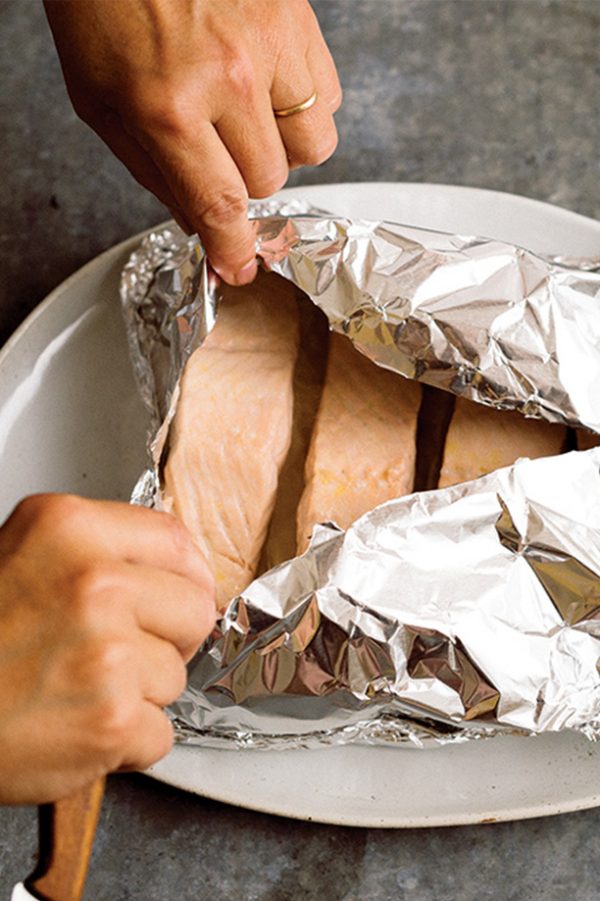
After cooking, let the packet cool for 1 minute before tearing open. Be careful: The escaping steam will be very hot.
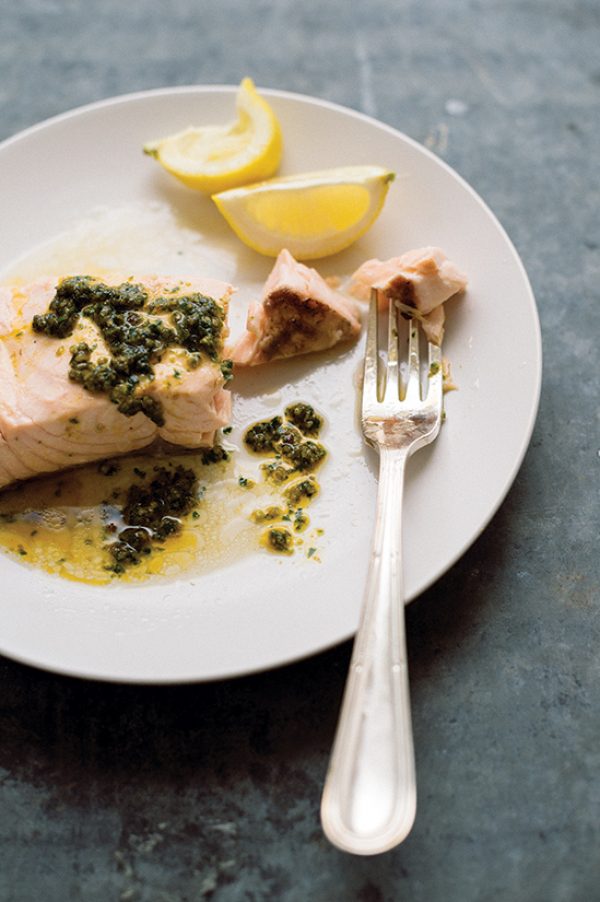
The bottoms of the fillets should be lightly seared while the flesh remains moist and tender. Top with chermoula sauce.
Do be sure to properly heat your skillet before adding the packet. The pan needs to be very hot, and you want to hear a sizzle as soon as the packet hits the pan. It should begin puffing after 2 minutes. We tried both stainless steel and cast-iron pans; both worked so long as they were given a full 5 minutes to heat (timing will vary by pan and stove).
And don’t forget that the salmon will continue to cook from residual heat even after you remove it from the burner. We found that 5 minutes on the heat, followed by 1 minute of resting, gave us the medium doneness we were looking for. Not sure? Use an instant thermometer. At Milk Street, we prefer our fish cooked to no more than 125°F at the center.
We liked our salmon topped with a chermoula sauce made from parsley, pine nuts, lemon zest, garlic and some spices. But the packet technique works no matter how you season your salmon.




